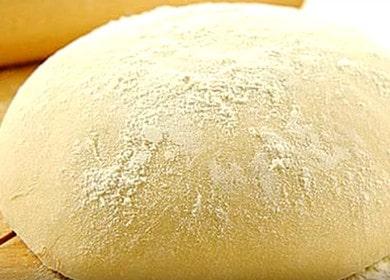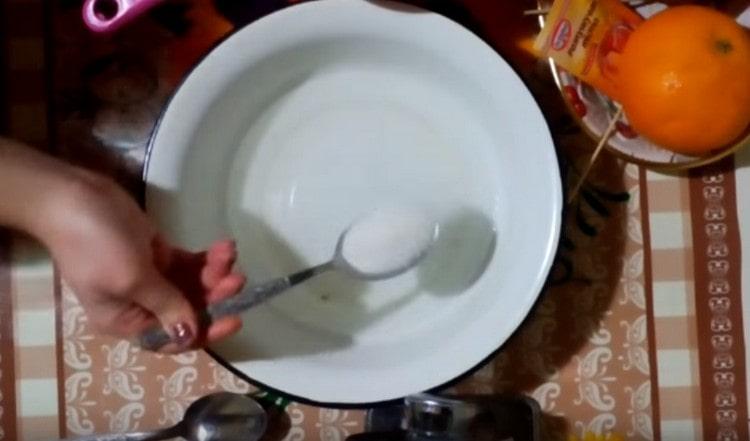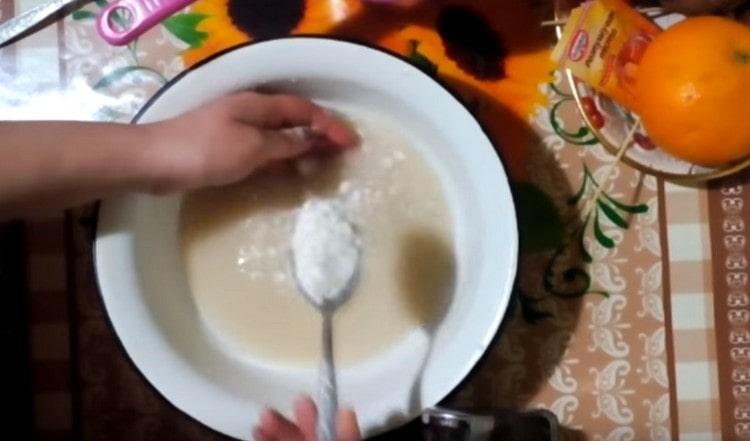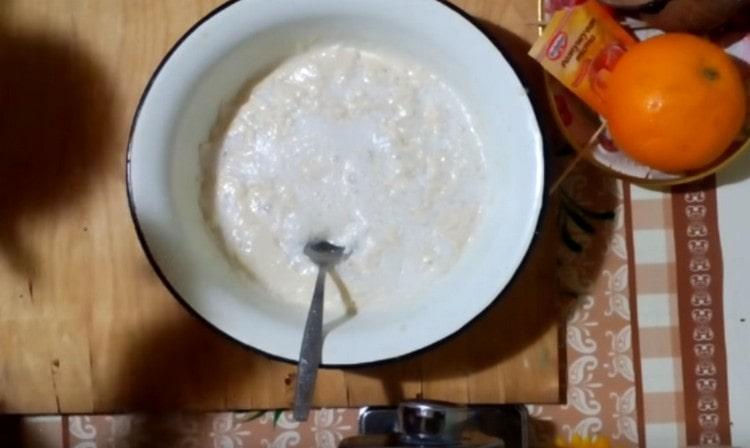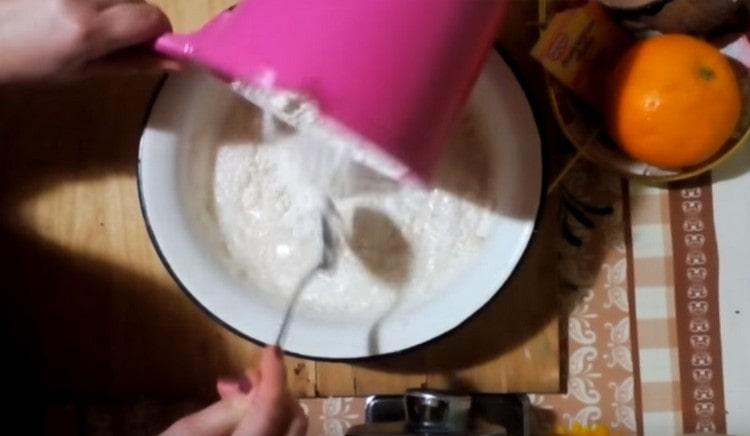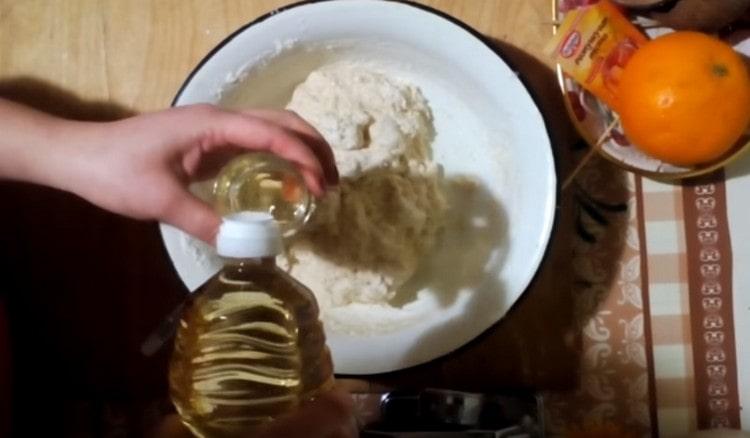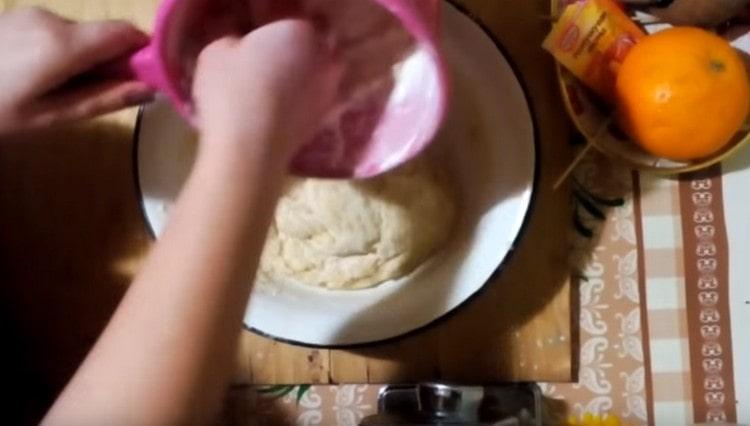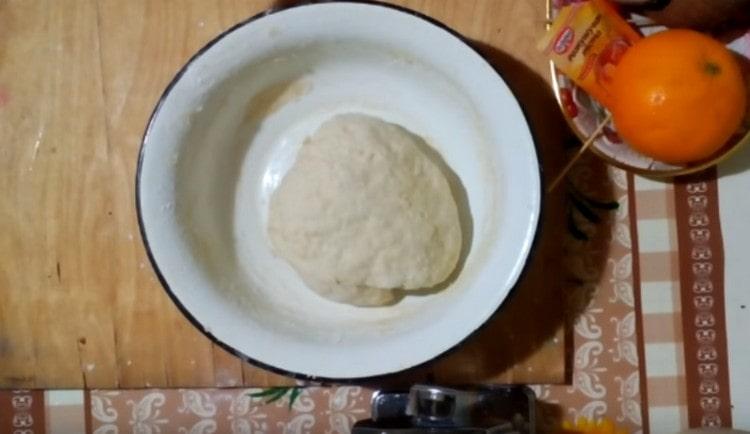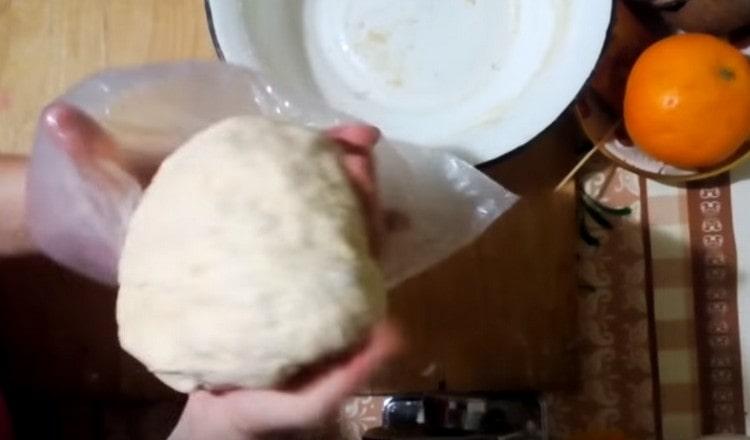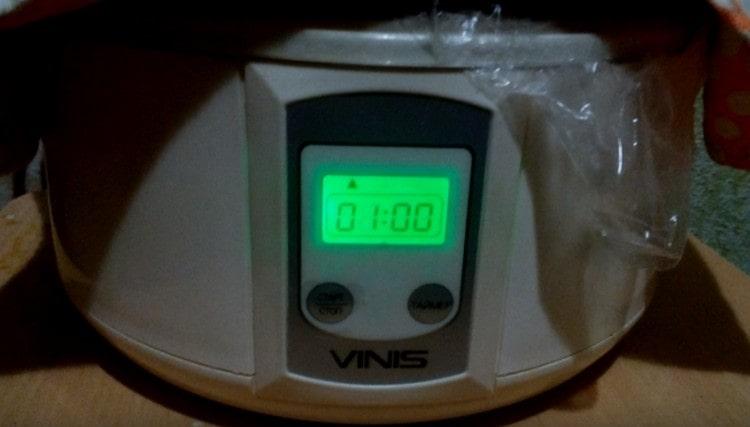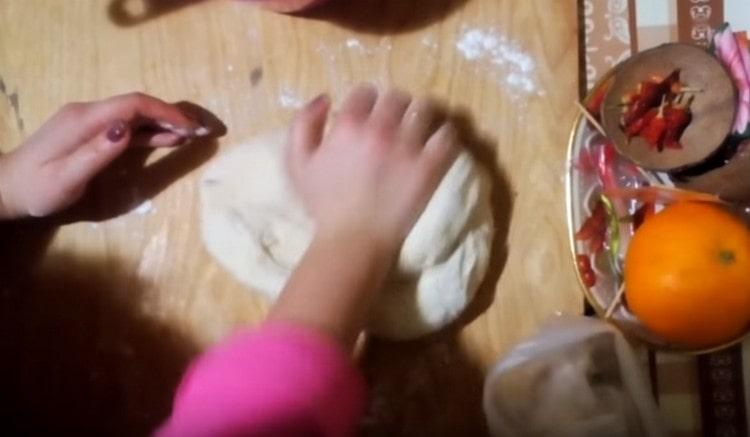Cookware:
- capacious bowl;
- tablespoon and tea;
- measured capacity;
- kitchen thermometer;
- Libra;
- cellophane;
- yogurt maker / slow cooker / heated oven.
Ingredients
| Name | amount |
| Live / dry yeast | ¼ small pack / 7 g |
| Wheat flour | 650 g |
| Boiled water (warm) | 300 ml |
| Granulated sugar | 2 tbsp. l |
| Salt | 1 tsp |
| Vegetable oil | 80 ml |
Step cooking
Put the dough
- Pour 300 ml of warm (30-40 ° C) boiled water into a spacious bowl. Pour 2 tbsp in water. l granulated sugar and stir.

- When the sugar has completely dissolved, crush a little less than a ¼ packet of fresh live yeast into sweetened water (or 7 g of dried yeast - whoever is used to it).

- Pour 100 g of flour (4 tbsp. L.) In portions into the water with yeast, and mix so that there are no lumps.

- Set the bowl aside for 10 minutes to let the yeast begin to "work."

Set the dough
- When abundant foam appears on the surface of the liquid dough, pour 1 tsp into a bowl. salt.

- With a convenient spoon, mix the salted mass, immediately pour half of the remaining flour (about 250-270 g), and knead the liquid dough until smooth.

- Before adding the rest of the flour, pour 80 g of vegetable oil into the dough and mix well (with your hands) until the dough-like mass begins to lag behind the hands and walls of the bowl.

- In three or four doses, add the rest of the flour, without stopping to intensively knead. Do not forget to leave 3-4 tbsp. l flour for adding during precipitation!

- Form a ball from a well-kneaded dough.

- Put a ball formed from dough into a thick plastic bag greased from inside with vegetable oil.

- Place the bag with the test in the yogurt maker (or in the multicooker with the Yogurt program), without tying the bag, press the edges of the cellophane with a lid (so that the contents of the bag do not “run away”), and leave it in heating mode for an hour.

- After the dough greatly increases in volume (3-4 times), it needs to be precipitated - knead well, and you can form baked goods with any filling.

The biggest drawback of this test is the lack of richness of taste. It is unsuitable for making buns or cheesecakes, but it is perfect for baking with flavorful flavoring fillers - meat or cabbage filling. It can be used for baking pizza, as well as sausages in the dough.
Video recipe
The video proposed for viewing demonstrates the process of preparing the simplest yeast dough for making baking in the oven. See how easy it is to cook. Be sure to read the comments below the video. They give a lot of tips from which you can prepare the filling.
Other dough recipes
Soft dough for kefir pies
Yeast dough for fried pies
Yeast dough
Dough with dry yeast for pies
